STEINBECK, JOHN. 1902-1968. Typed Manuscript Signed ("John Steinbeck" and "J.S."), titled "The Cup of Gold Being The Life of a Pirate, With Occasional Historic Accuracies," 235 pp (title, 1-234), 4tp, on yellow typing stock, [Lake Tahoe?, 1928,] inscribed by Steinbeck on the title and with minimal corrections in his hand, additionally annotated in red and black pencils, likely by Steinbeck's Stanford writing teacher, Edith Mirrielees, and another unidentified hand, title page with some chipping at edge and soiling, toning throughout.
Provenance: likely gift of John Steinbeck to David Heyler (notations on the title page); by descent.
"IF FOR NO OTHER REASON, THE TYPOGRAPHICAL ERRORS ON THE TITLE PAGE WOULD CONVINCE ME THAT THIS IS THE ORIGINAL MSS OF THIS—JOHN STEINBECK."
Steinbeck's first book Cup of Gold contains many of the seeds of his later greatness. Clearly inspired by Malory's Le Morte d'Arthur, it follows the path of the great privateer Henry Morgan from teenager in Wales to an immensely powerful Captain on the Spanish Main as one thing continually eludes him: the fabled Cup of Gold and the legend of the beautiful La Santa Roja. When he finally attains his goals, he finds that they cannot live up to the image he had created in his mind. The novel is a fantasy-allegory, a rewriting or expansion of an earlier story, "A Lady in Infra-Red." It is inspired by Rafael Sabatini's widely popular novel, Captain Blood (1922), but with a main character that is neither likeable nor admirable. It is "in many ways ... his most ambitious novel. He wanted to make it sing in the great tradition of English literature; he wanted to give it epic scope, to convert the Morgan of history to a universal figure of Faustian proportions whose story would illustrate the greatest literary theme of all: the folly of human vanity" (Benson 115). In a way, the novel seems to be the endorsement of the "artistic calling." Morgan leaves behind his family and everything he has known to pursue a life of wealth and adventure on the high seas, a noble thing to do, Steinbeck seems to argue, even if you are never truly able to find the happiness you seek.
After many years of labor, Steinbeck completed a draft of the novel in early 1928. Kate Beswick, a former girlfriend, offered to type the manuscript for submission, and Ted Miller, another Stanford friend and a lawyer, would take the manuscript around to publishers acting as Steinbeck's agent. Concurrently, in the summer, within a week of meeting Steinbeck, Carol Henning typed up another copy—a foreshadowing of her life once she became Carol Steinbeck in 1930. The present typescript may be this copy, typed by Carol in June 1928. We compared this to the copy at Stanford, apparently typed by Beswick (according to a John Howell description), and this copy evinces numerous significant additions and changes to the text (primarily the language), and is closer to the published version (and therefore likely slightly later than the Beswick copy).
The readers who responded to this particular draft did so in a lively, encouraging manner. These notes are not editorial, but are readerly or professorial, giving clear impressions: "Good ... I like this ... good characterization" (p 160). Interestingly, on the verso of p 170, the reader gives a strongly worded criticism of the direction the novel has taken: "You simply throw this chapter away! There is no suspense. La Santa Roho is much too sketchy, and the manner of her coming to Henry far too casual. You have not given Henry opportunity enough to get an impression. There ought to be a great climax when he sees her and hears her voice. Frankly, there is no climax."
In spite of this strongly worded note, Steinbeck did not change much in the Santa Roja chapter, although he did make significant changes throughout the previous chapter as Morgan and his band approached the Cup of Gold through the Panamanian jungle. It seems likely Morgan's meeting of La Santa Roja was purposefully anticlimactic, as the inability of the reality of Morgan's dream to live up to his imagination serves as one of the primary themes of the work. Steinbeck himself has annotated this draft, making small corrections in pen to pp 146, 147, 148, 150, 151-155, 157-159, 162-163, 165, 171, 174-175, and 177.
Steinbeck gifted this manuscript to David Heyler, likely sometime in the 1950s when he was gifting the younger man his "incunabula." Steinbeck has inscribed the title page thus: "If for no other reason, the typographical errors on the title page would convince me that this is the original mss of this—John Steinbeck." In 1928 Steinbeck had only recently arrived at the title "Cup of Gold," and the subtitle "Being The Life of a Pirate, With Occasional Historic Accuracies" (and the accompanying typo in "Occasional") represents an early iteration of the new title. Steinbeck adds an additional note at the upper margin: "I don't know whose comments these are in the margins. / J.S."
STEINBECK, JOHN. 1902-1968. Typed Manuscript Signed ("John Steinbeck" and "J.S."), titled "The Cup of Gold Being The Life of a Pirate, With Occasional Historic Accuracies," 235 pp (title, 1-234), 4tp, on yellow typing stock, [Lake Tahoe?, 1928,] inscribed by Steinbeck on the title and with minimal corrections in his hand, additionally annotated in red and black pencils, likely by Steinbeck's Stanford writing teacher, Edith Mirrielees, and another unidentified hand, title page with some chipping at edge and soiling, toning throughout.
Provenance: likely gift of John Steinbeck to David Heyler (notations on the title page); by descent.
"IF FOR NO OTHER REASON, THE TYPOGRAPHICAL ERRORS ON THE TITLE PAGE WOULD CONVINCE ME THAT THIS IS THE ORIGINAL MSS OF THIS—JOHN STEINBECK."
Steinbeck's first book Cup of Gold contains many of the seeds of his later greatness. Clearly inspired by Malory's Le Morte d'Arthur, it follows the path of the great privateer Henry Morgan from teenager in Wales to an immensely powerful Captain on the Spanish Main as one thing continually eludes him: the fabled Cup of Gold and the legend of the beautiful La Santa Roja. When he finally attains his goals, he finds that they cannot live up to the image he had created in his mind. The novel is a fantasy-allegory, a rewriting or expansion of an earlier story, "A Lady in Infra-Red." It is inspired by Rafael Sabatini's widely popular novel, Captain Blood (1922), but with a main character that is neither likeable nor admirable. It is "in many ways ... his most ambitious novel. He wanted to make it sing in the great tradition of English literature; he wanted to give it epic scope, to convert the Morgan of history to a universal figure of Faustian proportions whose story would illustrate the greatest literary theme of all: the folly of human vanity" (Benson 115). In a way, the novel seems to be the endorsement of the "artistic calling." Morgan leaves behind his family and everything he has known to pursue a life of wealth and adventure on the high seas, a noble thing to do, Steinbeck seems to argue, even if you are never truly able to find the happiness you seek.
After many years of labor, Steinbeck completed a draft of the novel in early 1928. Kate Beswick, a former girlfriend, offered to type the manuscript for submission, and Ted Miller, another Stanford friend and a lawyer, would take the manuscript around to publishers acting as Steinbeck's agent. Concurrently, in the summer, within a week of meeting Steinbeck, Carol Henning typed up another copy—a foreshadowing of her life once she became Carol Steinbeck in 1930. The present typescript may be this copy, typed by Carol in June 1928. We compared this to the copy at Stanford, apparently typed by Beswick (according to a John Howell description), and this copy evinces numerous significant additions and changes to the text (primarily the language), and is closer to the published version (and therefore likely slightly later than the Beswick copy).
The readers who responded to this particular draft did so in a lively, encouraging manner. These notes are not editorial, but are readerly or professorial, giving clear impressions: "Good ... I like this ... good characterization" (p 160). Interestingly, on the verso of p 170, the reader gives a strongly worded criticism of the direction the novel has taken: "You simply throw this chapter away! There is no suspense. La Santa Roho is much too sketchy, and the manner of her coming to Henry far too casual. You have not given Henry opportunity enough to get an impression. There ought to be a great climax when he sees her and hears her voice. Frankly, there is no climax."
In spite of this strongly worded note, Steinbeck did not change much in the Santa Roja chapter, although he did make significant changes throughout the previous chapter as Morgan and his band approached the Cup of Gold through the Panamanian jungle. It seems likely Morgan's meeting of La Santa Roja was purposefully anticlimactic, as the inability of the reality of Morgan's dream to live up to his imagination serves as one of the primary themes of the work. Steinbeck himself has annotated this draft, making small corrections in pen to pp 146, 147, 148, 150, 151-155, 157-159, 162-163, 165, 171, 174-175, and 177.
Steinbeck gifted this manuscript to David Heyler, likely sometime in the 1950s when he was gifting the younger man his "incunabula." Steinbeck has inscribed the title page thus: "If for no other reason, the typographical errors on the title page would convince me that this is the original mss of this—John Steinbeck." In 1928 Steinbeck had only recently arrived at the title "Cup of Gold," and the subtitle "Being The Life of a Pirate, With Occasional Historic Accuracies" (and the accompanying typo in "Occasional") represents an early iteration of the new title. Steinbeck adds an additional note at the upper margin: "I don't know whose comments these are in the margins. / J.S."

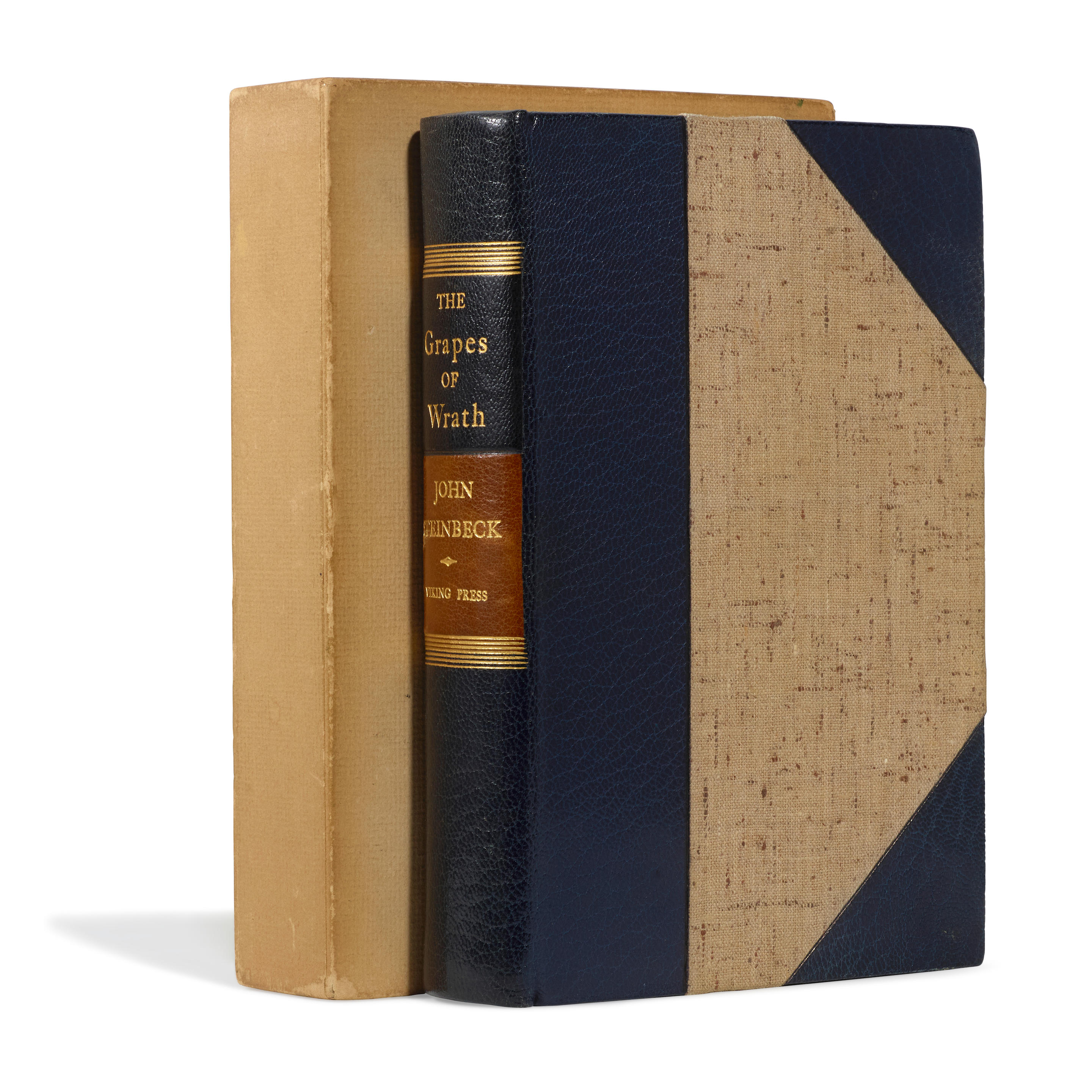


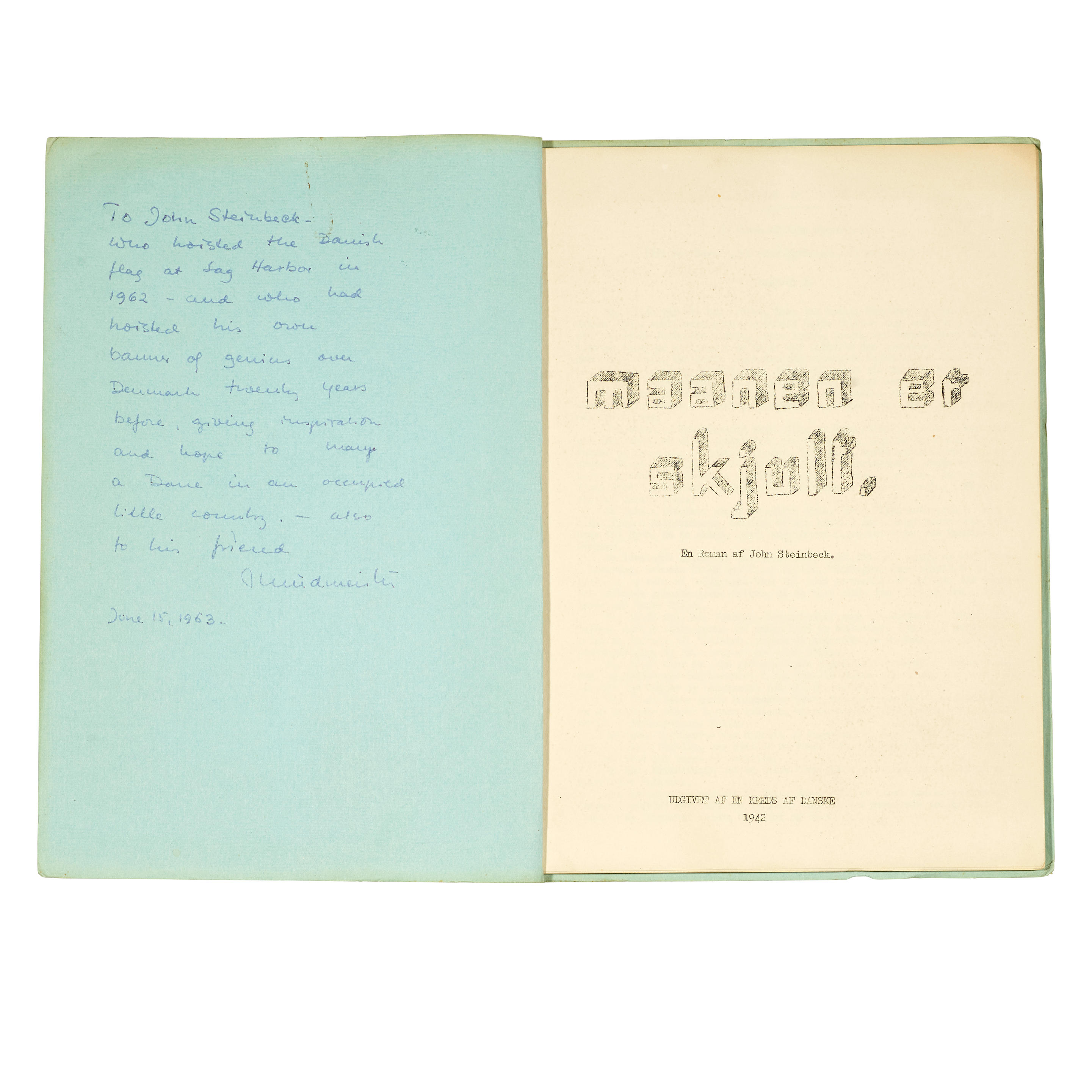
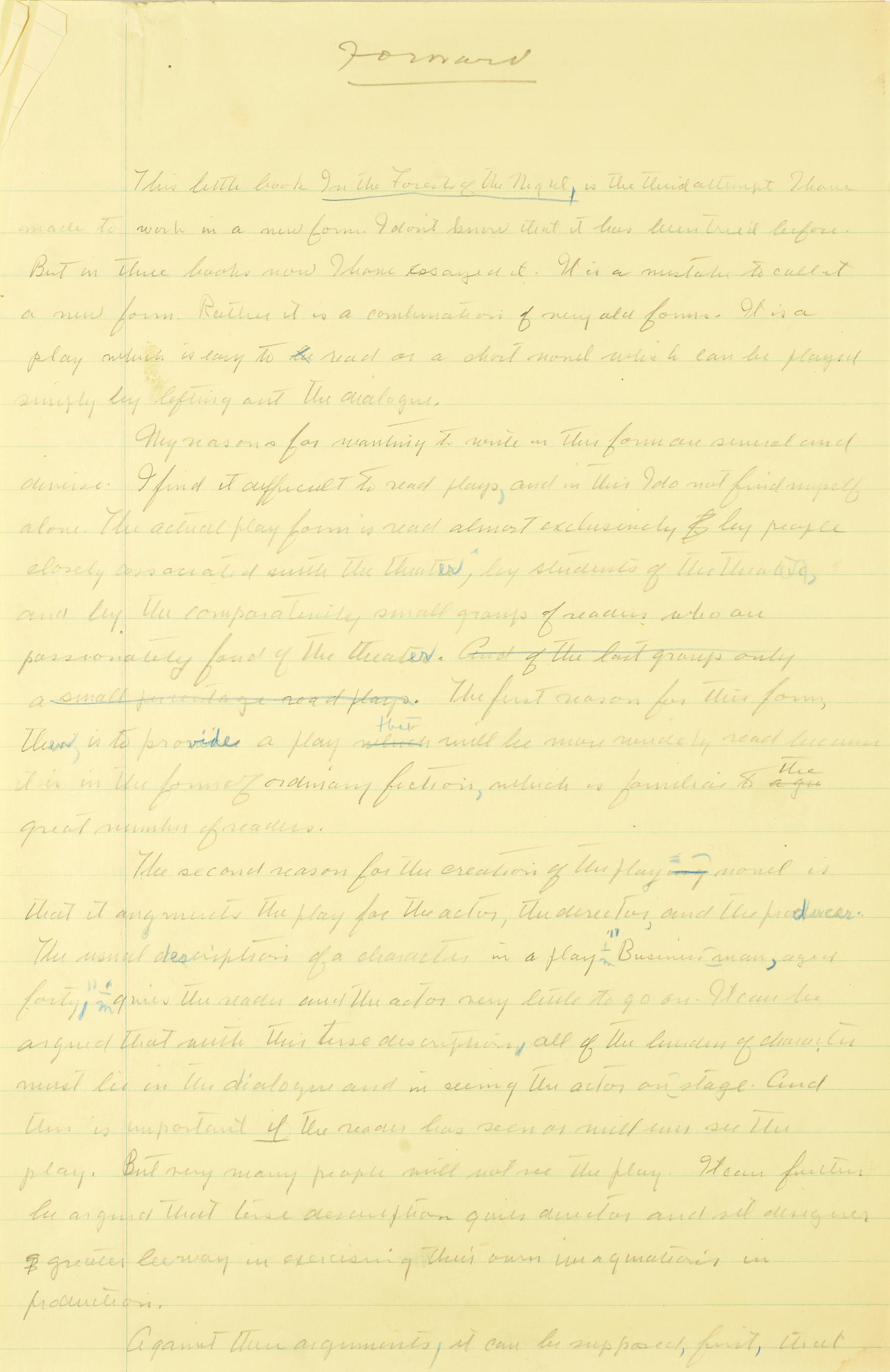
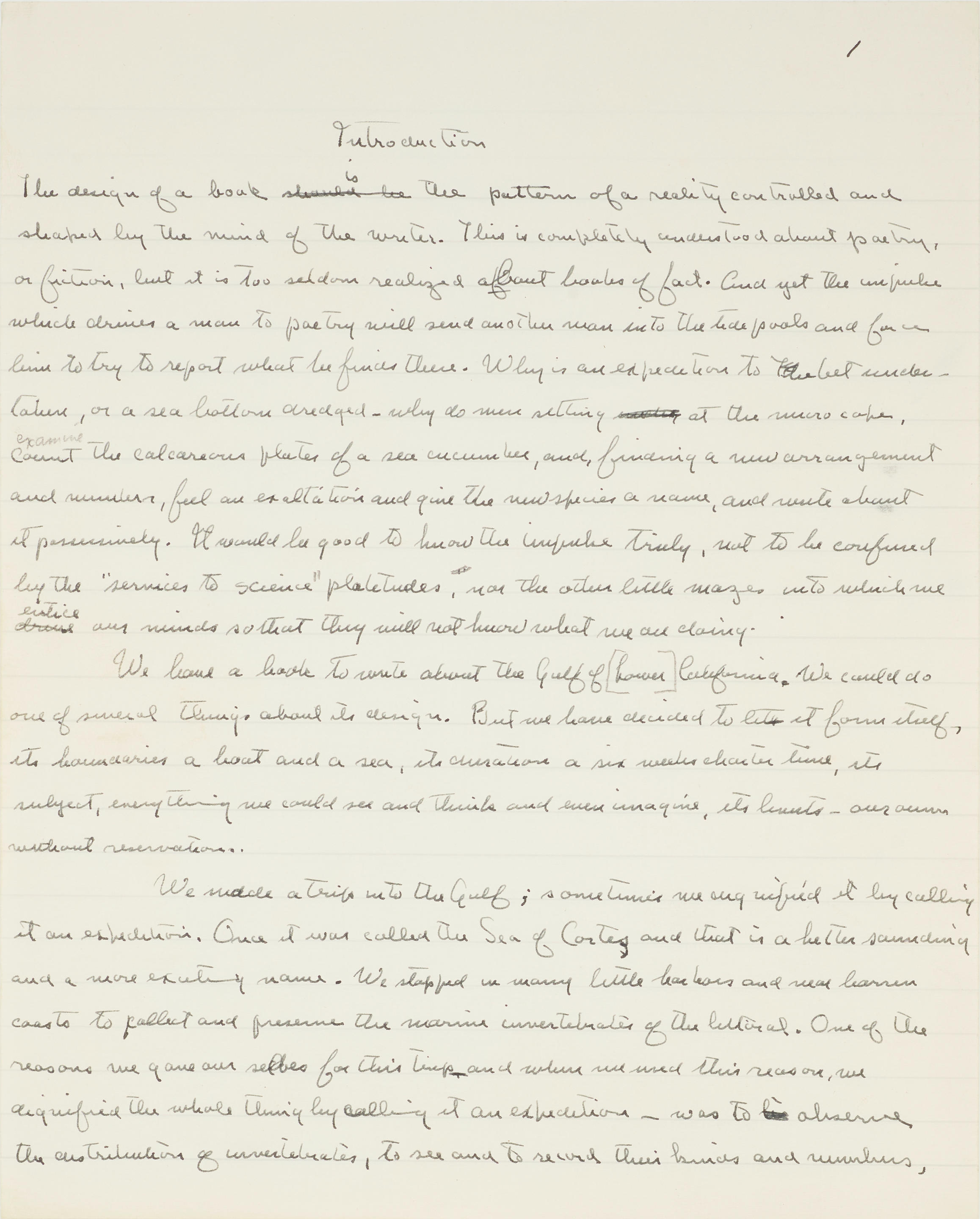


.jpg)

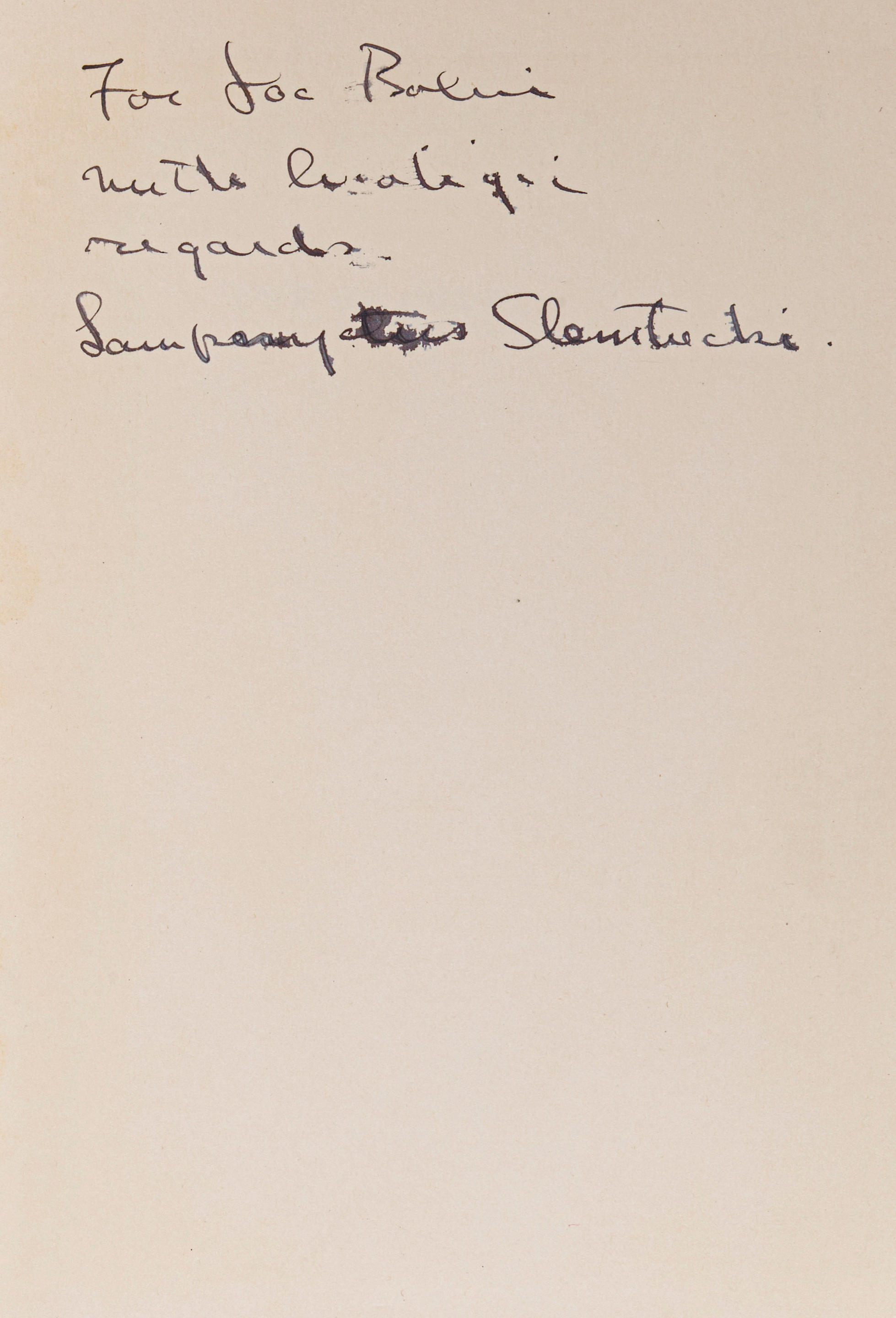
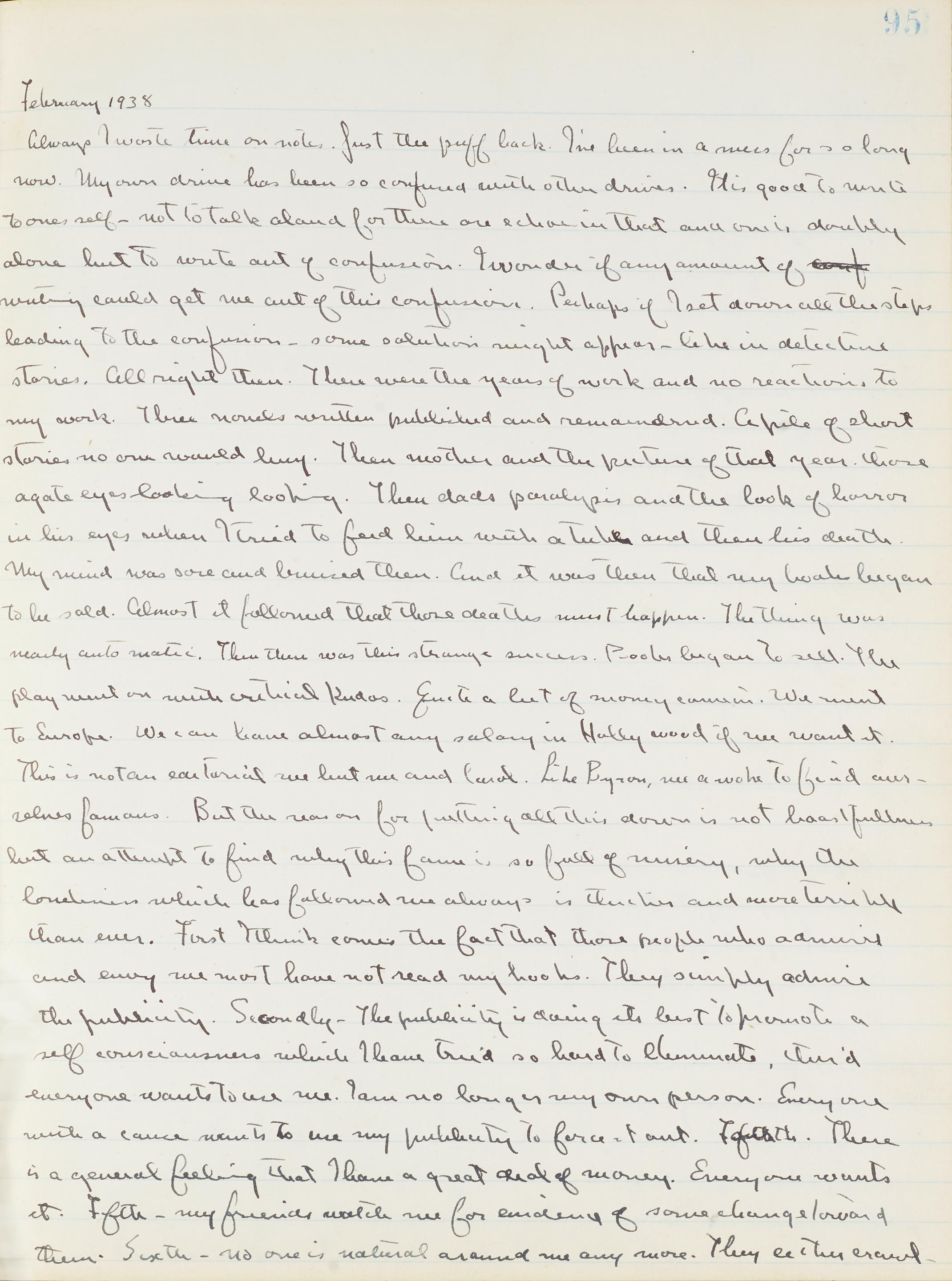
.jpg)

Testen Sie LotSearch und seine Premium-Features 7 Tage - ohne Kosten!
Lassen Sie sich automatisch über neue Objekte in kommenden Auktionen benachrichtigen.
Suchauftrag anlegen